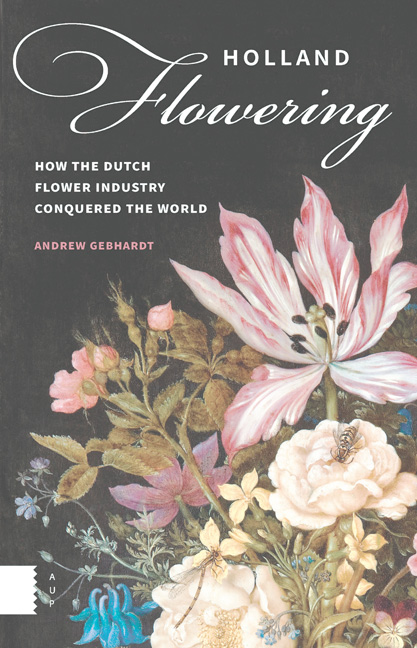The Dutch Flower Auction: Traders
Published online by Cambridge University Press: 10 December 2020
Summary
Like beauty, freedom of the market is in the eye of the beholder.
Economist Ha-Joon ChangDutch growers founded the horticultural auctions, they vote on auction policies, and they closely follow auction prices and trends. But they have little involvement with the auction's day-today operations, not even with the order their flowers and plants are sold, which is decided by lottery. Yet to the horticultural industry and to FloraHolland Aalsmeer, what happens here is no less crucial than cultivation, the grower's side of the cooperative. Events in the auction impact the whole horticultural chain. This is where the flowers and plants are sold. The auctions determine prices, and those prices reverberate through exporters, wholesalers, and retailers, and Dutch auctions establish a global rubric for floral value. Among other things, this means that even transactions far from the Dutch auctions are affected by their sales, since the sales set the standard for price, quality, and aesthetics. Dutch auctions are where you begin to see styles and developments in the industry, to note what is currently popular or losing favor. Dutch flower auctions are an effective barometer of horticultural trade in the Netherlands and around the world.
But of course, the Aalsmeer auction is also a place. The building has four cut-flower auction theaters and one for potted plants. Each weekday, through this gigantic structure that houses horticultural commerce, over twenty million cut flowers and a million plants enter and leave. So do ten thousand people, including several thousand traders, over four thousand FloraHolland employees in charge of logistics, movement, testing, bundling, and much else, plus hundreds more who work in restaurants, banks, insurance offices, and other businesses located in the complex. It's a massive operation. Coordinating the reliable and efficient transport and sale of these perishable commodities requires a carefully calibrated infrastructure – a heating system for plants, a cooling system for cut flowers, storage for both, and conveyors, trolleys, and machines to ensure smooth, rapid, precise movement. All of this is done to maintain the optimal freshness of the products for the traders sitting in the auction theaters. Working individually or for import and export companies, they come to Aalsmeer between Monday and Friday to buy flowers and plants. The growers own this place, but because this is where the flowers and plants are sold, it's much more of the trader's domain.
- Type
- Chapter
- Information
- Holland FloweringHow the Dutch Flower Industry Conquered the World, pp. 125 - 164Publisher: Amsterdam University PressPrint publication year: 2014



